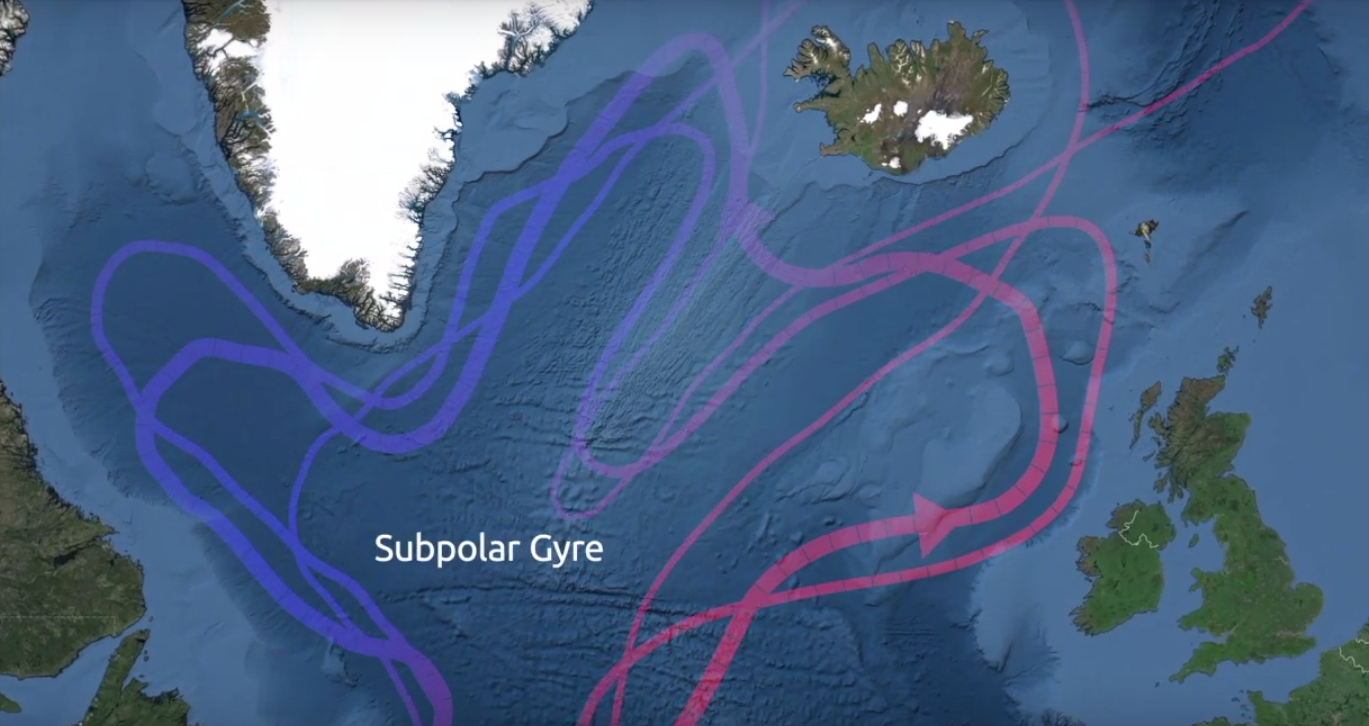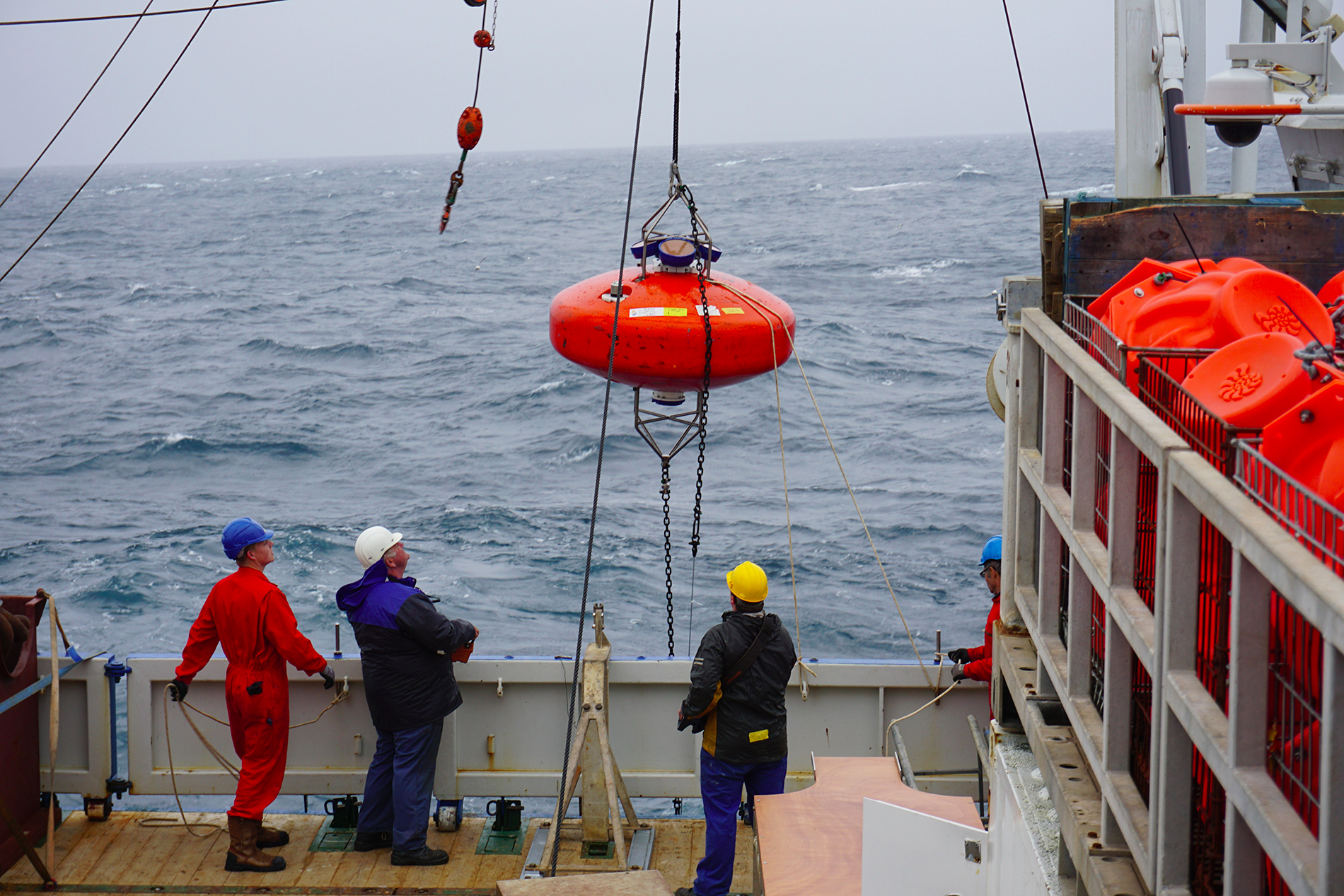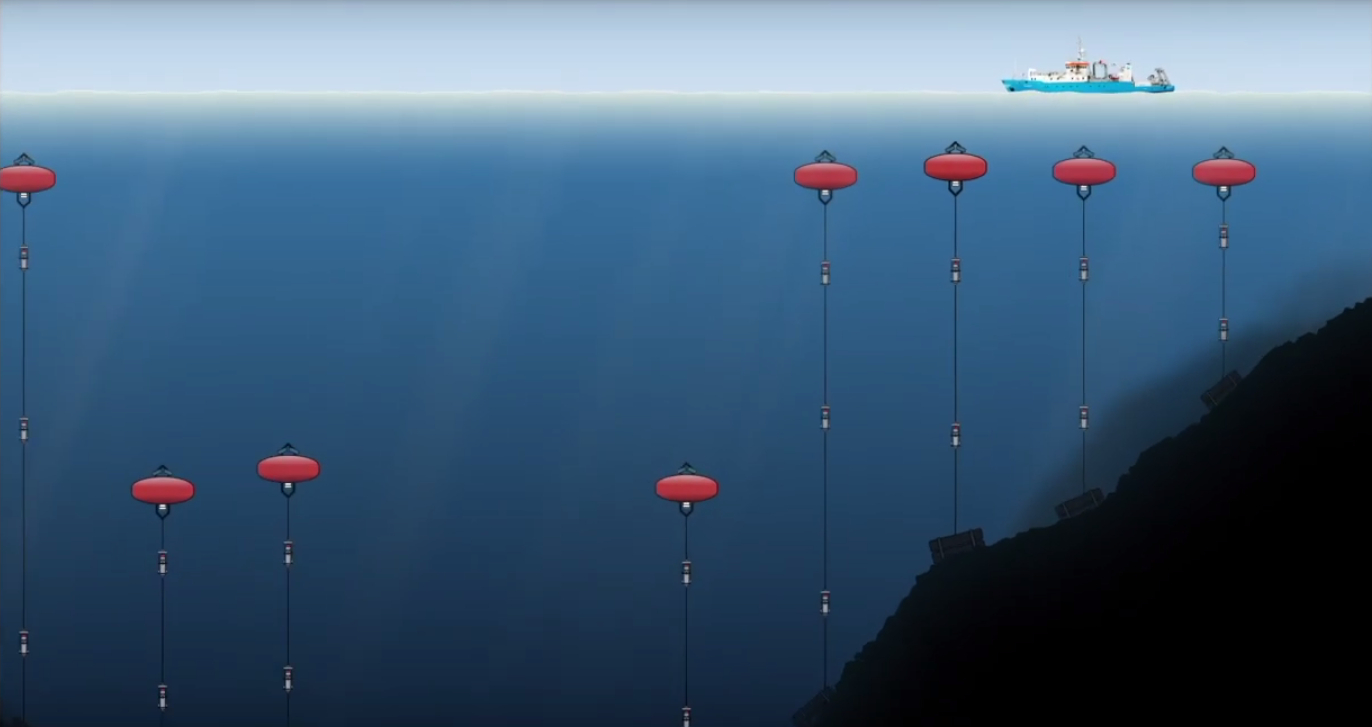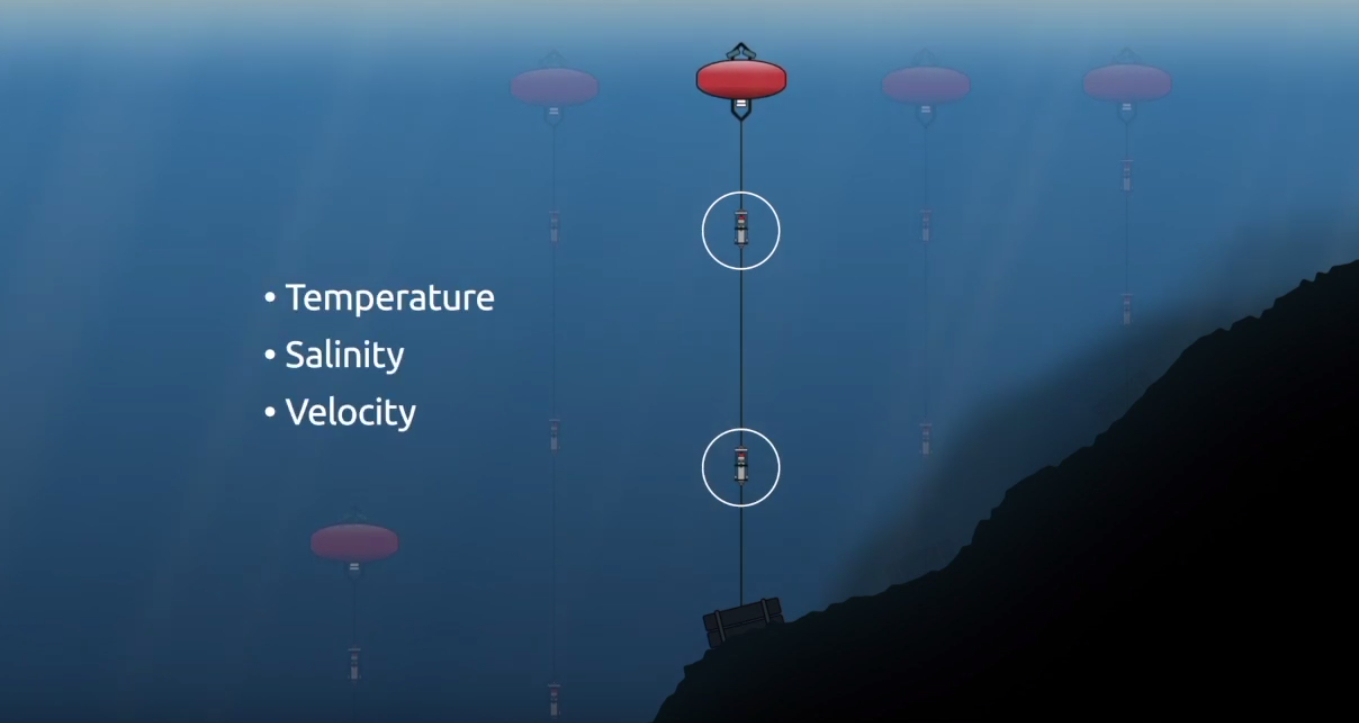Juist wateren ten westen van Europa cruciaal in oceaancirculatie en toekomst klimaat
De Nederlandse fysische oceanografe Femke de Jong van het NIOZ Koninklijk Nederlands Instituut voor Onderzoek der Zee droeg bij aan de studie. "Het warmtetransport door de MOC is belangrijk voor het klimaat in West-Europa. Deze resultaten zijn echt verrassend te noemen en ook belangrijk. Ze helpen wetenschappers begrijpen hoe het warmtetransport in de MOC in de mogelijk nabije toekomst gaat veranderen, en wat daarvan de klimaatgevolgen zijn."

In tegenstelling tot de heersende wetenschappelijke opvatting, bewijst de nieuwe studie dat het overgrote deel van de bijdrage aan de totale omwentelingscirculatie en de variaties daarin, zich niet in de Labradorzee ter hoogte van Canada voordoen maar in de gebieden tussen Groenland en Schotland. Daar vindt de omwenteling plaats wanneer de warme, zoute, ondiepe wateren die door de stromingen en wind van de tropen naar het noorden worden vervoerd, afzinken en veranderen in koudere, zoetere, diepe wateren die via de Irminger en IJsland bekkens op weg gaan naar het zuiden.
Betere klimaatvoorspellingen
Susan Lozier, professor Aard- en Oceaanwetenschappen aan de Nicholas School of the Environment van Duke University gaf leiding aan de internationale waarnemingsstudie die de nieuwe data opleverde. "Ter ondersteuning van klimaatvoorspellingen voor de komende jaren en decennia, moeten we weten waar deze diepe omwenteling momenteel plaatsvindt en wat de oorzaak van de veranderingen is," zegt Lozier.
"De omwentelingscirculatie brengt enorme hoeveelheden antropogene koolstof diep in de oceaan en helpt zo om de opwarming van de aarde af te remmen," zegt medeauteur Penny Holliday van Britse National Oceanography Center. "Het grootste reservoir van deze antropogene koolstof bevindt zich in de Noord-Atlantische Oceaan."
"De omwentelingscirculatie vervoert ook tropische warmte noordwaarts," licht Holliday toe, "dat betekent dat elke verandering die het ondergaat ook van invloed kan zijn op gletsjers en het Arctisch zee-ijs. Het is daarom levensbelangrijk dat we begrijpen wat er gaande is en wat er in de komende jaren zou kunnen gebeuren."
Nederlandse onderzoeksbijdrage
De resultaten van de eerste 21 maanden van het onderzoeksprogramma OSNAP (Omwenteling in de Subpolaire Noord-Atlantische Oceaan Programma) tonen aan dat de variabiliteit van de omwenteling in het oostelijk deel van de Noord-Atlantische Oceaan zeven keer groter was dan in de Labradorzee, en 88 procent was van de totale omvang van de omwentelingscirculatie zoals waargenomen over de hele Noord-Atlantische Oceaan.
Het NIOZ houdt sinds 1990 een oogje in het zeil op de lijn tussen Groenland en Schotland door middel van tweejaarlijkse hydrografische secties. Daarnaast staat sinds 2003 een NIOZ diepzee verankering met meetinstrumenten ten oosten van Groenland, in één van de gebieden waar door afkoeling diep water wordt gevormd. Fysische oceanografe Femke de Jong van het NIOZ maakt deel uit van het OSNAP project: "Om te begrijpen hoe het warmte transport in de mogelijk nabije toekomst gaat veranderen, moeten we eerst beter begrijpen hoe het systeem in elkaar zit. Deze nieuwe resultaten zijn een belangrijke bijdrage daaraan."

Alle hens aan dek
Wetenschappers van 16 onderzoeksinstituten uit zeven landen hebben aan de nieuwe studie bijgedragen. Op 1 februari publiceren zij hun peer-reviewed conclusies in Science.
"Ik kan het belang van deze internationale samenwerking voor het slagen van dit project niet genoeg benadrukken," zegt Lozier. "Het meten van de circulatie in de subpolaire Noord-Atlantische Oceaan is buitengewoon ingewikkeld en daarom hebben we een 'alle hens aan dek' aanpak nodig."
Deze Science publicatie is de eerste in de vijfjarige beginfase van het OSNAP onderzoeksproject, met een budget van 32 miljoen dollar, waarbij wetenschappers verankerde apparatuur en instrumenten voor onderwatermetingen in de Noord-Atlantische Oceaan gebruiken om de omwentelingscirculatie van de oceaan te meten. Zo willen zij de factoren die variaties veroorzaken aan het licht te brengen. Het OSNAP project is in 2014 van start gegaan en staat onder leiding van Lozier.
Onvoorziene veranderingen
"Voor wetenschappers is het spannend om te ontdekken dat er meer stukjes van de omwentelingspuzzel ontbreken dan we eerst dachten," zegt medeauteur Johannes Karstensen van het GEOMAR Helmholtz Centre for Ocean Research Kiel, in Duitsland.
"Hoewel de transformatie in de Labradorzee kleiner is dan we verwacht hadden, hebben we ontdekt dat dit bekken een grote rol speelt in het transport van zoet water van het Arctisch gebied,” zegt Karstensen. “Gezien de onvoorziene veranderingen in het Arctisch gebied zullen doorlopende metingen in dat bekken steeds belangrijker worden."
Artikel
M.S. Lozier, F. Li, S. Bacon, F. Bahr, A.S. Bower, S.A. Cunningham, M.F. de Jong, L. de Steur, B. DeYoung, J. Fischer, S.F. Gary, N.J.W. Greenan, N.P. Holliday, A. Houk, L. Houpert, M.E. Inall, W.E. Johns, H.L. Johnson, C. Johnson, J. Karstensen, G. Koman, I.A. LeBras, X. Lin, N. Mackay, D.P. Marshall, H. Mercier, M. Oltmanns, R.S. Pickart, A.L. Ramsey, D. Rayner, F. Straneo, V. Thierry, D.J. Torres, R.G. Williams, C. Wilson, J. Yang, I. Yashayaev and J. Zhao. Science, Feb. 1, 2019.
"A Sea Change in Our View of Overturning – First Results from the Overturning in the Subpolar North Atlantic Program"
DOI: 10.1126/science.aau6592
Waters west of Europe drive ocean overturning, key for regulating climate
A new international study finds that the Atlantic meridional overturning circulation (MOC), a deep-ocean process that plays a key role in regulating Earth’s climate, is primarily driven by cooling waters west of Europe.
In a departure from the prevailing scientific view, the study shows that most of the overturning and variability is occurring not in the Labrador Sea off Canada, as past modeling studies have suggested, but in regions between Greenland and Scotland. There, warm, salty, shallow waters carried northward from the tropics by currents and wind, sink and convert into colder, fresher, deep waters moving southward through the Irminger and Iceland basins.
Overturning variability in this eastern section of the ocean was seven times greater than in the Labrador Sea, and it accounted for 88 percent of the total variance documented across the entire North Atlantic over the 21-month study period.
These findings, unexpected as they may be, can help scientists better predict what changes might occur to the MOC and what the climate impacts of those changes will be, said Susan Lozier, the Ronie-Rochele Garcia-Johnson Professor of Earth and Ocean Sciences at Duke University’s Nicholas School of the Environment.
"To aid predictions of climate in the years and decades ahead, we need to know where this deep overturning is currently taking place and what is causing it to vary," said Lozier, who led the international observational study that produced the new data.
"Overturning carries vast amounts of anthropogenic carbon deep into the ocean, helping to slow global warming," said co-author Penny Holliday of the UK’s National Oceanography Center. "The largest reservoir of this anthropogenic carbon is in the North Atlantic."
"Overturning also transports tropical heat northward," Holliday said, "meaning any changes to it could have an impact on glaciers and Arctic sea ice. Understanding what is happening, and what may happen in the years to come, is vital."
Scientists from 16 research institutions from seven countries collaborated on the new study. They published their peer-reviewed findings Feb. 1 in Science.
"I cannot say enough about the importance of this international collaboration to the success of this project," Lozier said. "Measuring the circulation in the subpolar North Atlantic is incredibly challenging so we definitely needed an ‘all hands on deck’ approach."
This paper is the first from the $32 million, five-year initial phase of the OSNAP (Overturning in the Subpolar North Atlantic Program) research project, in which scientists have deployed moored instruments and sub-surface floats across the North Atlantic to measure the ocean’s overturning circulation and shed light on the factors that cause it to vary. Lozier is lead investigator of the project, which began in 2014.
"As scientists, it is exciting to learn that there are more pieces to the overturning puzzle than we first thought," said co-author Johannes Karstensen of the GEOMAR Helmholtz Centre for Ocean Research Kiel, in Germany.
"Though the overturning in the Labrador Sea is smaller than we expected, we have learned that this basin plays a large role in transporting freshwater from the Arctic," Karstensen said. “Continued measurements in that basin will be increasingly important," as the Arctic changes unexpectedly.
The new paper contains data collected over a 21-month period from August 2014 to April 2016.
Primary funding came from the U.S. National Science Foundation’s Physical Oceanography Program and the United Kingdom’s Natural Environment Research Council. Additional funding came from the European Union 7th Framework Programme and Horizon 2020.
Co-authors hailed from Duke; the UK’s National Oceanography Centre; Woods Hole Oceanographic Institution; the Scottish Association for Marine Sciences; the Royal Netherlands Institute for Sea Research and Utrecht University; Memorial University in St. John’s, Canada; GEOMAR Helmholtz Centre for Ocean Research in Kiel, Germany; and the Bedford Institute of Oceanography in Dartmouth, Canada.
They were also scientists from the University of Miami Rosenstiel School of Marine and Atmospheric Science; the University of Oxford; Scripps Institution of Oceanography at UC San Diego; the Ocean University of China and Qingdao National Laboratory for Marine Science and Technology; the National Oceanography Center in Liverpool, U.K.; the Laboratoire d’Oceanographie Physique et Spatiale in Plouzané, France; and the University of Liverpool.
Article
M.S. Lozier, F. Li, S. Bacon, F. Bahr, A.S. Bower, S.A. Cunningham, M.F. de Jong, L. de Steur, B. DeYoung, J. Fischer, S.F. Gary, N.J.W. Greenan, N.P. Holliday, A. Houk, L. Houpert, M.E. Inall, W.E. Johns, H.L. Johnson, C. Johnson, J. Karstensen, G. Koman, I.A. LeBras, X. Lin, N. Mackay, D.P. Marshall, H. Mercier, M. Oltmanns, R.S. Pickart, A.L. Ramsey, D. Rayner, F. Straneo, V. Thierry, D.J. Torres, R.G. Williams, C. Wilson, J. Yang, I. Yashayaev and J. Zhao. Science, Feb. 1, 2019.
"A Sea Change in Our View of Overturning – First Results from the Overturning in the Subpolar North Atlantic Program"
DOI: 10.1126/science.aau6592
Over het onderzoek
Het Science artikel is gebaseerd op data verzameld van augustus 2014 tot april 2016 tijdens de eerste 21maanden van het voortgaande onderzoek.
De primaire financiering kwam van het Physical Oceanography Program van de Amerikaanse National Science Foundation en de Britse Natural Environment Research Council. Aanvullende financiering werd beschikbaar gesteld door het zevende Kaderprogramma van de Europese Unie en Horizon 2020.
De medeauteurs zijn verbonden aan Duke University, VS; UK National Oceanography Centre, VK; het Woods Hole Oceanographic Institution, VS; de Scottish Association for Marine Sciences, VK; de Royal Netherlands Institute for Sea Research en de Universiteit Utrecht, NL; de Memorial University in St. John’s, Canada; het GEOMAR Helmholtz Centre for Ocean Research in Kiel, Duitsland en het Bedford Institute of Oceanography in Dartmouth, Canada.
Overige medeauteurs zijn wetenschappers verbonden aan de University of Miami, VS; de University of Oxford, VK; het Scripps Institution of Oceanography, VS; de Ocean University of China en Qingdao National Laboratory for Marine Science and Technology, China; het National Oceanography Center in Liverpool, VK; het Laboratoire d’Oceanographie Physique et Spatiale in Plouzané, Frankrijk en de University of Liverpool, VK.

